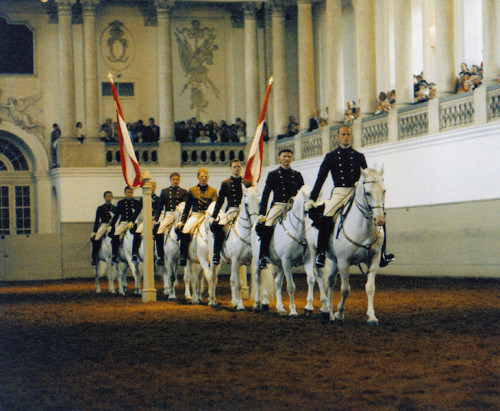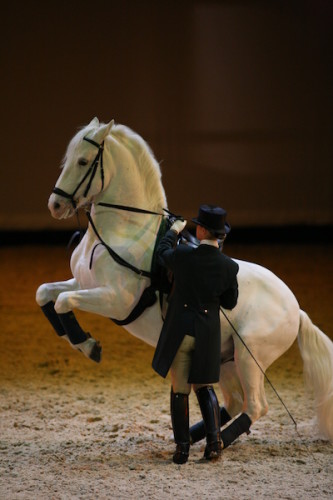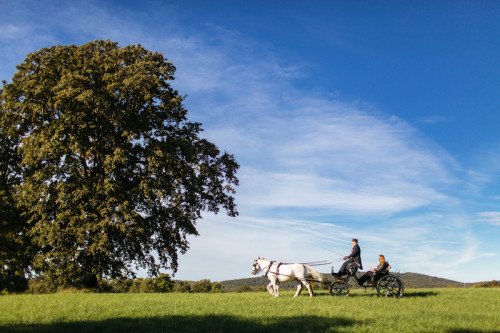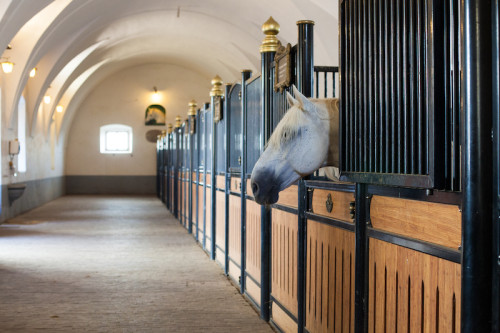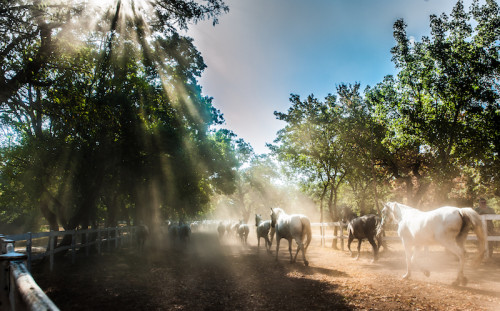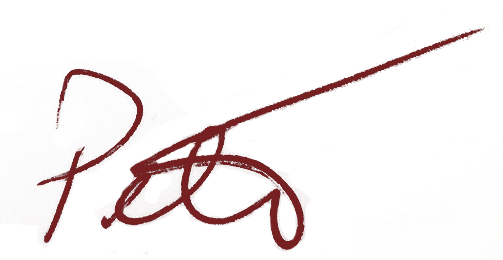(For part 1 of this 3-part series, please see “A holiday? Not exactly…”; for part 3, please see “I know one when I see one“.)
Ever since I was a small boy, I’ve known of the Lipizzaner stallions, the elegant grey-spotted horses that grace the performances of Vienna’s Spanish Riding School. Perhaps because I spent three teenage years horseback riding, or maybe because I’m more interested in the future than the past, I’ve always remembered Vienna more for these horses than for its historical palaces and art.
Those of you that know of the Spanish Riding School will be familiar with the ritual formality and theatrical perfection of the School’s dressage, where the horses seem to float above the ground as they move through their routine. As a demonstration of man’s control over nature it’s impressive, but entirely contrived – not that that makes it any less beautiful.
I never knew the Lipizzaner’s history or provenance, so it came as a surprise when I saw “Lipica” on Google Maps, near Slovenia’s border with Italy, and realised that the town’s Italian name was Lipizza – hence the horse breed’s name. Since we started researching our European journeys I had wanted to visit. We had run out of time twice before, but I resolved that this time would be different!
At Sezana we left the highway that leads to Trieste, in Italy. The GPS said we still had seven kilometers to go on the lovely meadow-lined road that leads south from Sezana. The day had started overcast, but by now we were blessed with a blue-skied mid-summer morning, the sun glinting through the trees as we drove. A signpost led us toward the Lipica Stud Farm down a narrower road, with white picket fences and linden trees lining it on both sides. The air seemed soft and gently fragranced. Almost involuntarily, we slowed down to enjoy the pleasure of entering this equine paradise.
Presently, we arrived at the entrance gate. While we couldn’t see many people, it was clear that at times the stud farm draws large crowds of visitors. We were shown around by two guides. The first, Victoria, welcomed us to view the horses’ morning dressage training, and then took us to the stables where the stallions are kept, all the while answering our questions with humour and authority. Second, her colleague, Vid, gave us a glimpse of the network of paths used by Lippizan-drawn carriages to access the farm’s ten square kilometres. Finally, we explored the farm’s museum and historic stables. Victoria and Vid were so infectiously enthusiastic about their work that Pei Fen and I found ourselves falling in love with the farm and horses too.
“Next time, when you bring your guests, be sure to arrive well before 10 in the morning,” Vid told us. “Why is that?” we asked. “Because there is a spectacle you won’t want to miss…” Vid went on to explain that each morning, the mares are sent out to graze at 10am. Vid’s animated description conjured up images of a herd of elegant Lipizzan mares stamping their feet, impatient to run free. The gates of their stables open. They gallop away and the earth shakes. A dust cloud rises goes up, and twirling, subsides. Then silence, except for the rustling of the linden leaves in the gentle breeze. At least, this is how I imagine it to be – the first time I see this sight will be with our guests later this summer
Eventually we had to leave for an appointment at a restaurant in the nearby Vipava valley. We drove slowly to the exit of the stud farm’s grounds, trying to linger as long as possible in this corner of Slovenia. After the past couple of hours, anything – even a restaurant that two of our Slovenian friends said “you absolutely must try” – would surely be a letdown?
And with that thought I put the address of Majerija into our GPS.
Interested in our new itinerary? Please see here the Journey Dossier for Austrian-Hungarian Lands I: Vienna, the Adriatic, the Alps and Prague (12, 10 or 8 Days)
